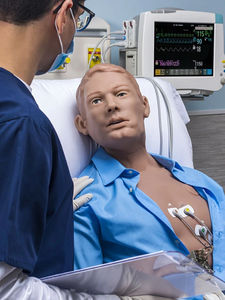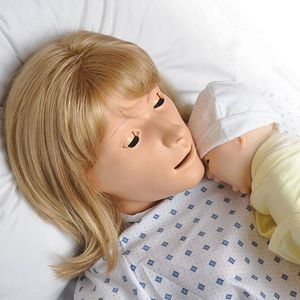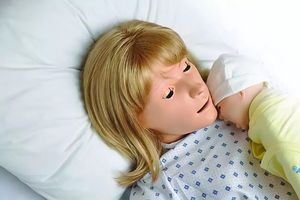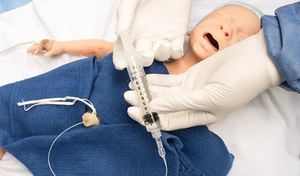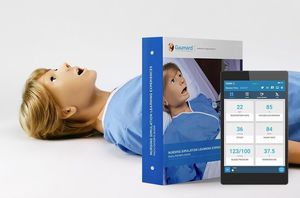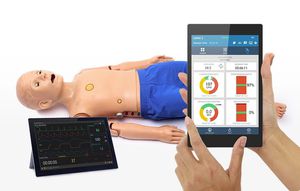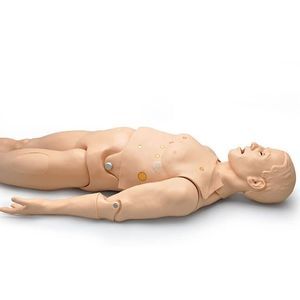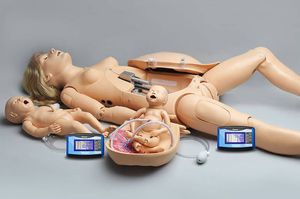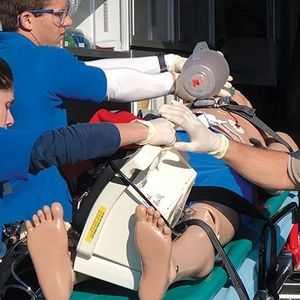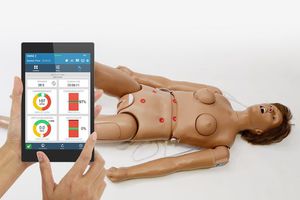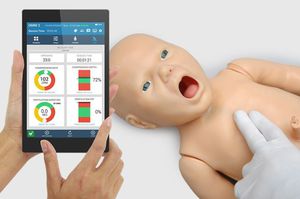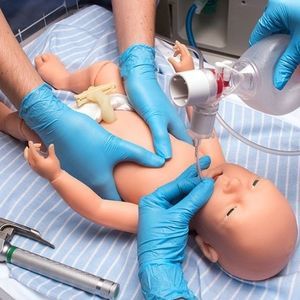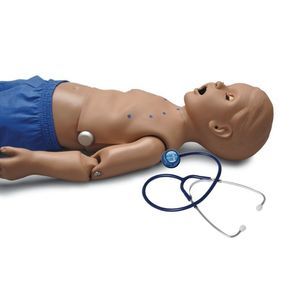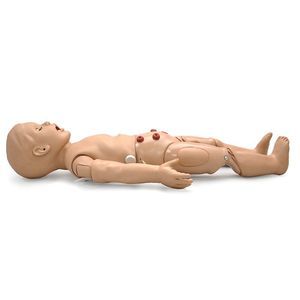
ECG patient simulator HAL® S3010breathingheart rateinjection
Add to favorites
Compare this product
Characteristics
- Procedure
- ECG, breathing, heart rate, injection, intraosseous infusion, CPR
- Application
- gastro-enterology
- Type
- baby
- Form
- whole body
Description
Newborn HAL's® true-to-life physical and physiological features, wireless mobility, and ease-of-use allow you to simulate realistic clinical cases. Whether training occurs in a simulation center, in situ, or in transit, participants of any level can practice the skills needed to provide safe and effective care to neonatal patients.
Newborn HAL® S3010 is a 40-week tetherless newborn featuring programmable spontaneous breathing, pulses, and color, and it responds to CPR like a real baby.
Wireless and tetherless
Tetherless and wireless; fully responsive during transport 1. Smoothly transitions between physiologic states in response to commands from a wireless tablet PC.
Cyanosis
Color and vital signs respond to hypoxic events and interventions.
Realistic Umbilicus
HAL’s umbilicus can be catheterized and has a pulse synchronized with programmed heart rate.
Bilateral IV arm
Newborn HAL® has bilateral IV training arms that can be used for bolus or intravenous infusions and draining fluids.
Intraosseous access
Intraosseous infusion and injection system with realistic tibia bones.
Newborn has conductive skin regions that allow the application of real electrodes to view ECGs with physiologic variations, allowing the user to track cardiac rhythms with their own equipment just like with a human patient.
Powerfully intuitive. Ready for use.
The intuitive design of UNI 3 offers the ease of use and capabilities required by even the most demanding simulation programs.
Learn just once and for all.
The design of UNI 3 is shared across our complete line of computer-controlled patient simulators. Once familiarized,
Catalogs
Related Searches
- Gaumard anatomical model
- Demonstration anatomical model
- Gaumard training simulator
- Analysis software
- Gaumard general care simulator
- Control software
- Gaumard training manikin
- Gaumard upper body simulator
- Surgical simulator
- Monitoring software
- Gaumard patient simulator
- Plastic anatomy model
- Scan software
- Education software
- Gaumard lower body simulator
- Gaumard injection simulator
- Gaumard portable simulator
- General care training manikin
- Gaumard monitoring simulator
- Gaumard female simulator
*Prices are pre-tax. They exclude delivery charges and customs duties and do not include additional charges for installation or activation options. Prices are indicative only and may vary by country, with changes to the cost of raw materials and exchange rates.






